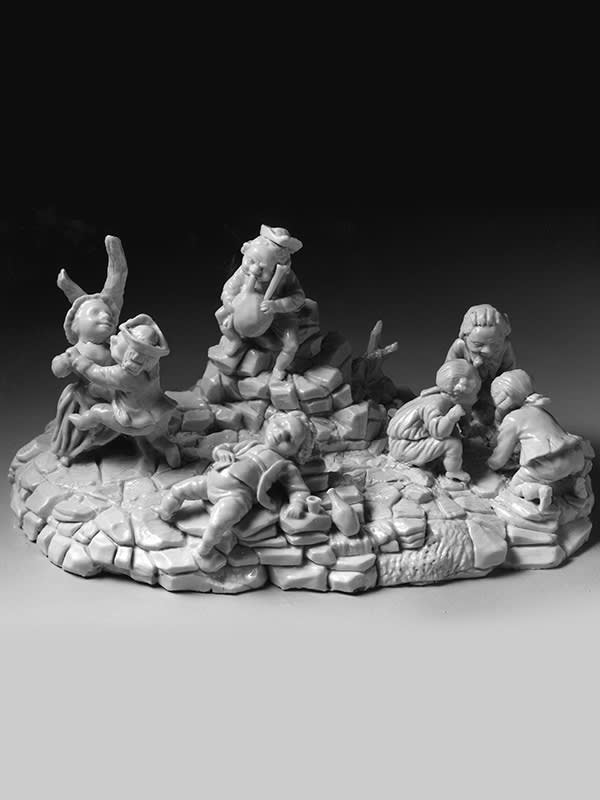
Cozzi Large Figural Group Of A Number Of Dwarfs, Circa 1780
Length: 11 ¼ ins (28.5 cms)
An extremely rare and unusual Cozzi figural group of Seven Dwarfs at play, the seven joyous figures all at different activities upon an oval rock work base, built up in some parts and with two tree stumps in the background. The first group of three dwarfs huddled, squatting together and playing cards, each in eighteenth century dress and wearing periwigs, another figure slumped before them asleep with a bottle and glass to his side, while a female dwarf dances with her companion to the sound of bagpipes played by another dwarf seated upon a high rocky mound.
The attribution of Cozzi rests with two other rare groups, the only known comparisons which were exhibited at the Museo Civici Veneziani 20th February – 20th May 1998, “La Porcellan Di Venezia Nel 1700”, curated by Phillipo Pedrocco. The two groups No. 96 in the exhibition catalogue comprise of just two figures of dwarfs in each group, they are catalogued as extremely rare erotic figural groups of farmer dwarfs. On a close comparison with these groups not only is the modeller the same, but also the faces are identical to two figures within this larger group, the female dancer and one of the crouching dwarfs to the right of the group. It has been suggested that what we are in fact seeing within these three groups is in fact a set, which would have been made to go together for perhaps table decoration within a private house, for it is apparent that the figures playing cards are playing for their time with the female dwarf.
Interest in dwarfs is well documented in the seventeenth and eighteenth centuries with particular emphasis and popularity at the Great European Courts in both Italy and France. In fact, the Gonzaga family at Mantua were said to have solely dwarf servants within their household, therefore it is apparent that dwarfs were strongly linked within the courtly life of the times. Although the groups are attributed to Cozzi, the characteristics of the formation of the base both beneath and the modelled areas on top, are similar to Doccia and when the paste is examined, particularly the unglazed areas of the base, an attribution to Doccia should not be precluded.
Join our mailing list
* denotes required fields
We will process the personal data you have supplied in accordance with our privacy policy (available on request). You can unsubscribe or change your preferences at any time by clicking the link in our emails.